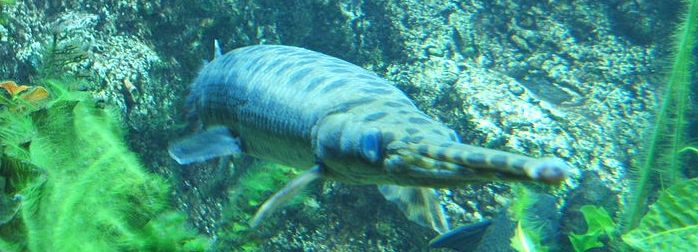Reproduction
Spawning takes place during the spring and summer. Longnose Gars swim upstream in the spring because of the high waters. They prefer mating in shallow waters, sometimes so shallow that their backs are sticking out of the water. They have been seen mating in open waters where there are weeds and rocks.
Mating can involve up to fifteen males to a single female. When the female is ready, she leads the males in an elliptical pattern for up to fifteen minutes before the spawning starts. After they get to the spawning bed, the male will nudge the female in the pectoral and lateral side. The fish return to the surface and take gulps of air, with their swim bladders that allow them to breath air, often. When spawning takes place, the fish put their heads down and snout close to the bottom. The sperm and eggs are released when they rapidly and violently quiver.
A single female lays about 30000 eggs a year. The most ever recorded is 77000. This often leads to multiple males attending to a single female during spawning. The eggs hatch in three-to-nine days to hatch. Temperature and embryo developmental patterns determine how long the eggs will hatch, like in most fish. The Longnose Gar provides no parental care for their newborns. If the eggs are in another fish's nest, that fish may take care of the Longnose Gar newborns as well as their own.
The female Longnose Gar grows faster and lives longer than the males do. Females usually live beyond seventeen years old. Male have rarely been recorded older than eleven. When grown in captivity, both male and female have a much higher life span.
